Cloud adoption has risen significantly in the past few years due to digital transformation initiatives. Businesses are migrating their operations to the cloud due to its enhanced scalability, flexibility, and agility. Gartner predicts that by 2025, over 85% of organizations will adopt a cloud-first principle.
The Shift to Cloud Computing
The global business landscape is witnessing a significant shift towards cloud computing, driven by its myriad benefits. Let’s examine some key factors that make cloud computing an ideal solution for your business.
- Scalability: Cloud computing offers you the ability to scale resources up or down based on demand, which reduces the need for upfront investments, and accommodates fluctuating workloads.
- Accessibility: Cloud services can be accessed from anywhere with an internet connection, promoting remote work, global collaboration, and expansion.
- Disaster Recovery: Cloud providers offer robust data backup and disaster recovery solutions, reducing the risk of data loss and ensuring business continuity.
Understanding Cloud File Drop Automation
File Drop Automation is a process that automates workflows based on the addition of new files to a specific folder. This means that when a file is dropped into a designated folder, a predefined workflow is triggered automatically, eliminating the need for manual intervention. As the adoption of popular cloud services such as Amazon S3 and Microsoft Azure Blob Storage is on the rise, this functionality plays an even more important role. It involves the automation of processes when files are added to these cloud-based folders. This includes data processing, data integration, and even data analysis tasks, ensuring that the data is readily available for use across various platforms and applications.
For instance, your business might set up a workflow that automatically processes sales data whenever a new sales report is added to a specific Amazon S3 bucket. Or you might use Microsoft Azure Blob Storage to store customer feedback forms, with a workflow set up to automatically analyze and categorize this feedback whenever a new form is added. By automating these processes, your business can ensure that its data is processed quickly and accurately, allowing you to make timely, data-driven decisions.
Cloud File Drop Automation can benefit your organization through:
- Enhanced Efficiency: File Drop Automation significantly reduces the time and effort required to initiate and execute workflows. By automatically triggering processes when a new file is added, it frees up resources for other critical tasks.
- Improved Accuracy: With automation, the risk of errors associated with manual processes is significantly reduced, ensuring that the right processes are triggered by the right files at the right time.
- Cost-Effective: By reducing the need for manual intervention and minimizing errors, File Drop Automation can lead to significant cost savings in the long run.
- Real-Time Processing: File Drop Automation allows for real-time processing of data as soon as it is dropped into the cloud-based folder, enabling businesses to make timely decisions based on the most recent data.
- Enhanced Collaboration: With files automatically processed and available in the cloud, collaboration among team members located in different geographical locations becomes easier and more efficient.
Cloud File Drop Automation with Astera
Astera makes it possible for you to ingest data from the cloud without spending hours in manual coding and other processes. Simply leverage the file drop automation feature to automate the processing of files in cloud-based sources such as FTP, Amazon S3, and Microsoft Azure Blob Storage. This streamlined automation enhances efficiency and reduces the risk of errors, which makes data management more accurate and reliable.
How Astera File Drop Automation Works
Astera allows you to set up a system that automatically detects when a file is dropped into a specified cloud directory, processes the data, and transfers it to a designated destination. This not only simplifies data management but also ensures that your data is always up-to-date and ready for analysis.
To utilize the cloud browser support in File Drop, you need to initially deploy the shared connection via the catalog. Once this is done, you can schedule the process to automate the workflow. This enhancement streamlines the process and makes it more efficient, further empowering businesses to leverage the power of the cloud.
Here is a step-by-step guide on how to effectively use this feature:
- As a first step in this process, create a Shared Action containing a Cloud Connection to deploy it via the catalog.

- Next, click on enable for catalog option and proceed to deploy the Shared Action.
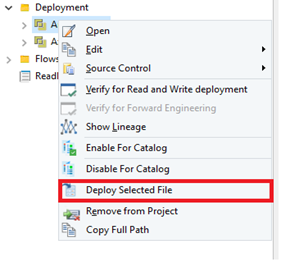
- Once the connection is successfully deployed and added to the catalog, check if the shared action is visible in the Connections section of the Resource Catalog to ensure it has been saved.

- Next, open your dataflow. Here, we are writing data from a delimited source to an Excel destination. The file in the source is extracted from the variable where the FilePath is defined.
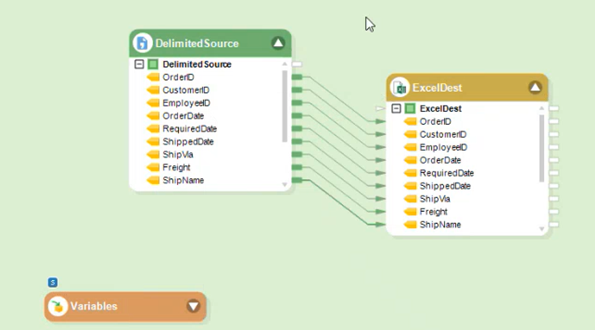
- The variable here comes from the workflow, where the ContextInfo is typically used with the “Dropped File Path” frequency.
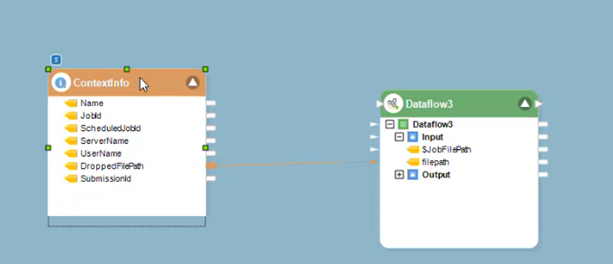
- Now close the project and open the Scheduler. Here, amongst the Frequency options choose “When File is Dropped” and then select Browse Cloud Folders.

- A dialog box will appear displaying your deployed Cloud Connection. Select any folder and set it as the directory to watch.
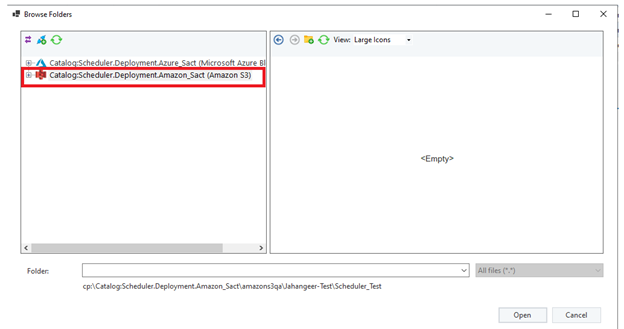
- Enable polling and set the time interval to 30 seconds. This will ensure that the directory is checked every 30 seconds to see if a file has been dropped. Finally, save the scheduler settings and drop a file in the designated folder to verify its functionality.
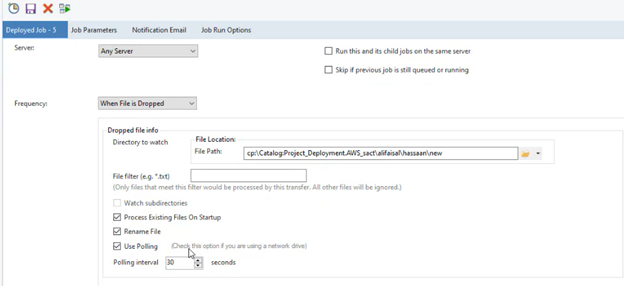
Final Words
As businesses increasingly rely on data for informed decision-making, the importance of file drop automation in the cloud becomes evident. This feature equips you with a competitive edge in managing the rising volume of information while promoting agility, adaptability, and efficiency in the dynamic business landscape.
Astera’s file drop automation of cloud-based sources is an efficient and user-friendly feature that can significantly enhance your data management and transfer processes. By utilizing it, you can not only save valuable time but also reduce the likelihood of errors, ultimately leading to a boost in productivity.
To experience the benefits of this feature firsthand, download Astera’s 14-day free trial today!
Ready for a Workflow Upgrade?
Leverage Astera's new Cloud File Drop Automation to seamlessly process files dropped into your cloud-based folders. Effortlessly manage files and enhance workflow efficiency in just a few clicks.
Try it Now!











